7 Steps to Identify Your Highest-Cost, Highest-Impact Vendor Relationships

Did you know regional companies earning $40M to $75M often spend $50K to $150K each month on outside vendors? Many leaders are surprised by how quickly external costs pile up and eat into profits. When every dollar has an impact, knowing exactly where your vendor spend goes can highlight hidden savings and spark smarter resource decisions. Clear tracking uncovers opportunities to redirect funds and build stronger, more flexible teams for lasting success.
Table of Contents
- Analyze Total Vendor Spend Across All Business Functions
- Break Down Costs By Category: Agencies, Consultants, Partners
- Spot Hidden Vendor Dependencies Hurting Margins
- Assess ROI and Impact: Which Vendors Drive Real Results?
- Compare Internal Capability Vs. Work Being Outsourced
- Identify Immediate Savings Opportunities With Real Numbers
- Prioritize Vendors For Replacement Based On Cost and Impact
Quick Summary
| Takeaway | Explanation |
|---|---|
| 1. Analyze total vendor spend carefully | Map out all external spend across all business functions to uncover hidden costs. |
| 2. Categorize expenditures by vendor type | Distinguish between agency, consultant, and partner costs to assess spending priorities. |
| 3. Identify hidden vendor dependencies | Recognize dependencies that could erode margins and restrict internal growth opportunities. |
| 4. Assess vendor ROI for strategic decisions | Track key performance indicators to determine which vendors deliver true business value. |
| 5. Evaluate internal capacity versus outsourcing | Compare outsourced work to internal capabilities to uncover potential cost-saving measures. |
1. Analyze Total Vendor Spend Across All Business Functions
Every dollar matters when you’re running a $40M to $75M regional business. Understanding your total vendor spend is the first critical step in breaking free from expensive external dependencies.
Spend analysis goes beyond just looking at your monthly invoices. According to procurement research, it’s a strategic tool for gaining comprehensive insights into your organizational expenditures across all business functions. This means mapping out every single dollar you’re spending on external vendors in marketing, operations, technology, strategy, creative work, and consultancy.
Start by gathering statements from every vendor relationship. Categorize these expenses by function and track the total annual investment. You might be shocked to discover you’re spending $50K to $150K monthly on external support that your internal team could potentially manage.
Here’s a practical breakdown to help you map your vendor ecosystem:
- Marketing agencies and creative services
- Technology implementation partners
- Growth and strategy consultants
- Operational support vendors
- Design and development firms
- Fractional executive services
Are You Overpaying for Work Your Team Could Own? can provide additional insights into identifying these hidden costs.
Your goal isn’t just to cut costs. It’s about redistributing resources to empower your internal teams and refocus on what truly drives your business forward. By meticulously analyzing your total vendor spend, you create a roadmap for strategic reinvestment and increased operational efficiency.
2. Break Down Costs by Category: Agencies, Consultants, Partners
Not all vendor relationships are created equal. To truly understand your external spending, you need a systematic approach that goes beyond simple line item invoices.
Spend analysis best practices recommend categorizing your external investments into distinct groups that reflect your business’s actual operational needs. This means breaking down your vendor ecosystem into precise categories like marketing agencies, strategy consultants, technology partners, design firms, and operational support providers.
Key Vendor Categories to Analyze:
- Marketing and creative agencies
- Growth and strategy consultants
- Technology implementation partners
- Operational support vendors
- Fractional executive services
- Design and development firms
By meticulously organizing your spending, you create a crystal clear picture of where your money is actually going. Most regional businesses between $40M and $75M are shocked to discover they’re spending $50K to $150K monthly across these vendor categories without a comprehensive understanding.
Each category requires a different evaluation lens. Marketing agencies might be measured by lead generation and conversion rates. Strategy consultants by actionable insights delivered. Technology partners by implementation efficiency and system integration success.
Are You Overpaying for Work Your Team Could Own? can help you dive deeper into understanding these nuanced vendor relationships.
Remember your goal isn’t just cost cutting. It’s about strategic resource allocation that empowers your internal teams and drives meaningful business growth.
3. Spot Hidden Vendor Dependencies Hurting Margins
Vendor relationships can silently erode your business margins without you even realizing it. Understanding these hidden dependencies is critical for maintaining financial health and operational independence.
Many regional businesses between $40M and $75M are unknowingly trapped in complex vendor ecosystems that incrementally drain profitability. These dependencies go beyond simple service contracts they create intricate webs of reliance that limit your team’s flexibility and strategic options.
Red Flags of Hidden Vendor Dependencies:
- Recurring monthly services with minimal tangible outcomes
- Custom integrations making vendor replacement difficult
- Long term contracts with automatic renewal clauses
- Specialized knowledge locked exclusively with external partners
- Complex billing structures obscuring true service value
- Multiple interconnected vendor relationships creating system dependencies
Think of these dependencies like financial parasites slowly consuming your margins. Each unnecessary vendor relationship represents potential internal capability that could be developed more cost effectively.
Are You Overpaying for Work Your Team Could Own? can help illuminate these hidden cost structures.
Your strategic goal should be transforming vendor dependencies into internal capabilities. By systematically identifying and breaking these relationships you can redirect resources toward building sustainable organizational strength that directly supports your core business objectives.
4. Assess ROI and Impact: Which Vendors Drive Real Results?
Not all vendor relationships are created equal. Your goal is to identify which external partnerships genuinely move the needle for your business and which are simply draining your resources.
Every dollar spent with an external partner should deliver measurable value. This means going beyond surface level metrics and diving deep into true business impact. For regional businesses between $40M and $75M annual revenue these assessments can unlock $150K to $300K in potential savings.
Key Performance Indicators for Vendor ROI:
- Direct revenue generation
- Cost savings or efficiency improvements
- Strategic capabilities added
- Competitive advantage created
- Speed of implementation
- Quality of deliverables
The most successful businesses treat vendor relationships like internal investments. They demand clear outcomes measurable results and tangible progress toward strategic objectives.
Understanding the Role of AI in SMB Valuation can provide additional context on how strategic vendor choices impact overall business value.
Consider creating a quarterly scorecard for each vendor that tracks their specific contributions. This transforms vendor management from an administrative task into a strategic opportunity for continuous improvement and cost optimization.
5. Compare Internal Capability vs. Work Being Outsourced
Most businesses are paying external vendors for work their teams could actually accomplish. Understanding the gap between outsourced work and internal potential is your pathway to significant cost savings.
Every dollar spent on an external vendor represents an opportunity to build internal organizational capability. For regional businesses between $40M and $75M annual revenue this comparison can unlock $200K to $500K in potential annual savings.
Key Areas to Evaluate for Internal Capability:
- Marketing content creation
- Graphic design and creative services
- Strategy and consulting work
- Technology implementation
- Operational process development
- Data analysis and reporting
- Project management
The most successful businesses view vendor relationships as temporary knowledge transfer opportunities. Your goal should be developing internal skills that permanently replace external dependencies.
Are You Overpaying for Work Your Team Could Own? provides deeper insights into identifying these opportunities.
Start by creating a comprehensive skills inventory of your current team. Identify learning gaps and create targeted development plans that transform external spending into internal growth. This approach not only reduces costs but also increases team engagement and organizational resilience.
6. Identify Immediate Savings Opportunities with Real Numbers
Stop guessing about your vendor costs. Precise financial analysis can reveal immediate savings opportunities that transform your bottom line.
For regional businesses between $40M and $75M annual revenue strategic spend analysis can uncover $150K to $300K in potential savings within just 90 days. This isn’t about cutting corners its about surgical precision in understanding where your money truly goes.
Quick Savings Identification Strategies:
- Analyze monthly recurring vendor expenses
- Calculate total annual spend per vendor category
- Compare current rates with market benchmarks
- Identify overlapping service agreements
- Review contract terms for negotiation opportunities
- Spot redundant service subscriptions
- Evaluate performance against total investment
Every line item represents a potential opportunity for optimization. Your financial team might be sitting on a gold mine of cost reduction strategies they haven’t yet recognized.
Are You Overpaying for Work Your Team Could Own? provides a deeper framework for uncovering these hidden savings.
The most successful businesses treat vendor spending like an investment portfolio constantly rebalancing and seeking maximum return. Your goal is transforming fixed expenses into strategic investments that directly support your core business objectives.
7. Prioritize Vendors for Replacement Based on Cost and Impact
Not all vendor relationships are equal. Strategic businesses prioritize replacing external partnerships that drain resources while delivering minimal value.
For regional businesses between $40M and $75M annual revenue a systematic vendor replacement approach can unlock $200K to $500K in annual savings. The key is creating a methodical framework that evaluates both financial investment and strategic impact.
Vendor Replacement Prioritization Matrix:
- Highest cost per deliverable
- Lowest measurable business impact
- Most complex contractual arrangements
- Easiest internal capabilities to develop
- Vendors with longest replacement timelines
- Services with most redundant offerings
- Relationships with minimal performance accountability
Your goal is transforming external dependencies into internal capabilities. This means looking beyond immediate cost savings and understanding how each vendor relationship either accelerates or inhibits your business growth.
Are You Overpaying for Work Your Team Could Own? provides additional insights into building your vendor replacement strategy.
Successful businesses treat vendor management like a strategic investment portfolio. They continuously reassess external partnerships ensuring every dollar spent drives meaningful organizational progress and builds long term competitive advantage.
Below is a comprehensive table summarizing the strategies and insights discussed in the article related to analyzing and optimizing vendor spending for regional businesses.
| Strategy | Key Points & Actions | Expected Results |
|---|---|---|
| Analyze Total Vendor Spend | Map out spending across all functions and gather statements. Categorize expenses by function. | Discover and potentially reduce unnecessary spending. |
| Break Down Costs by Category | Categorize investments into precise groups: marketing, technology, etc. | Gain a clear understanding of external spending and optimize allocations. |
| Spot Hidden Vendor Dependencies | Identify recurring services, complex integrations, and long-term contracts. | Reduce dependencies that hurt margins and increase internal capabilities. |
| Assess ROI and Impact | Evaluate vendors based on KPIs like revenue generation and strategic impact. | Unlock savings and ensure vendors deliver measurable value. |
| Compare Internal Capability vs. Outsourcing | Assess gaps between outsourced work and internal potential. Develop internal skills. | Achieve cost savings and enhance team capabilities. |
| Identify Immediate Savings Opportunities | Analyze recurring expenses, compare rates, and review contracts for savings. | Realize potential savings within 90 days and transform expenses into investments. |
| Prioritize Vendors for Replacement | Use a prioritization matrix to assess cost, impact, and ease of replacement. | Gain long-term savings and strategic growth by transforming dependencies. |
Cut Your Vendor Costs by $200K to $500K and Take Back Control of Your Business
The article’s 7-step approach shows how regional businesses spending $50K to $150K monthly on agencies, consultants, and other vendors often face hidden costs and costly dependencies they didn’t sign up for. You didn’t start your company to manage a dozen outside partners or be trapped by technology you don’t love. The frustration of paying for work your own team could own is real, and these vendor relationships quietly drain margins and limit your business growth.
At Average Robot we specialize in helping $40M to $75M Midwest and Southeast regional businesses break free from these dependencies. We do this by systematically replacing marketing agencies growth consultants technology partners and fractional executives with empowered internal teams fueled by AI as invisible infrastructure—not hype. Our approach cuts total outsourcing costs by 30 to 40% translating into $200K to $500K annual savings while putting your people back in the driver’s seat.
If you want to stop overpaying and start building vendor independence now consider Are You Overpaying for Work Your Team Could Own? for a deeper look at hidden outsourcing expenses or jump straight into your free Vendor Dependency Assessment to map where your money currently goes and how to regain control. Don’t let another quarter pass overspending on consultants and agencies. Visit Average Robot today to schedule your assessment and begin cutting costs 40% so you can spend less on vendors and more on what you love.
Frequently Asked Questions
How do I start analyzing my total vendor spend?
Begin by gathering statements from all vendor relationships and categorizing expenses by function. This will provide clarity on where your money is going and help identify potential areas for savings within 30 days.
What categories should I use to breakdown vendor costs?
Organize your vendor ecosystem into distinct categories such as marketing agencies, strategy consultants, and technology partners. By systematically breaking down these costs, you can create a clear picture of your spending within a month.
How can I identify hidden vendor dependencies that affect my margins?
Look for recurring monthly services that offer minimal outcomes and complex billing structures. Identifying these red flags will allow you to highlight dependence and potentially save 15-25% on ongoing costs.
What performance indicators should I use to assess vendor ROI?
Focus on key metrics like direct revenue generation and cost savings. Evaluating these indicators can pinpoint which vendor relationships are most beneficial, aiming to conduct a thorough review every quarter.
How can I evaluate my internal team’s capability versus outsourced work?
Create a skills inventory of your team to identify areas where internal capabilities can replace outsourced work. This approach not only reveals potential cost savings of $200K to $500K annually but also enhances team engagement by developing skills internally.
What steps should I take to prioritize vendors for replacement?
Assess vendors based on cost per deliverable and measurable impact on business goals. Rank them on a matrix and aim to replace the least valuable ones within the next quarter to optimize your vendor relationships.
Recommended
- Are You Overpaying for Work Your Team Could Own?
- About | Discover Opportunities - Schedule Today — Average Robot
- Owner-Led AI Adoption Tips for Small Businesses — Average Robot
- Purchase Data Guide: How to Buy and Use in 2025 - ApusNest Blog | ApusNest
- 7 effektive Leadqualifizierung Methoden für B2B Unternehmen




